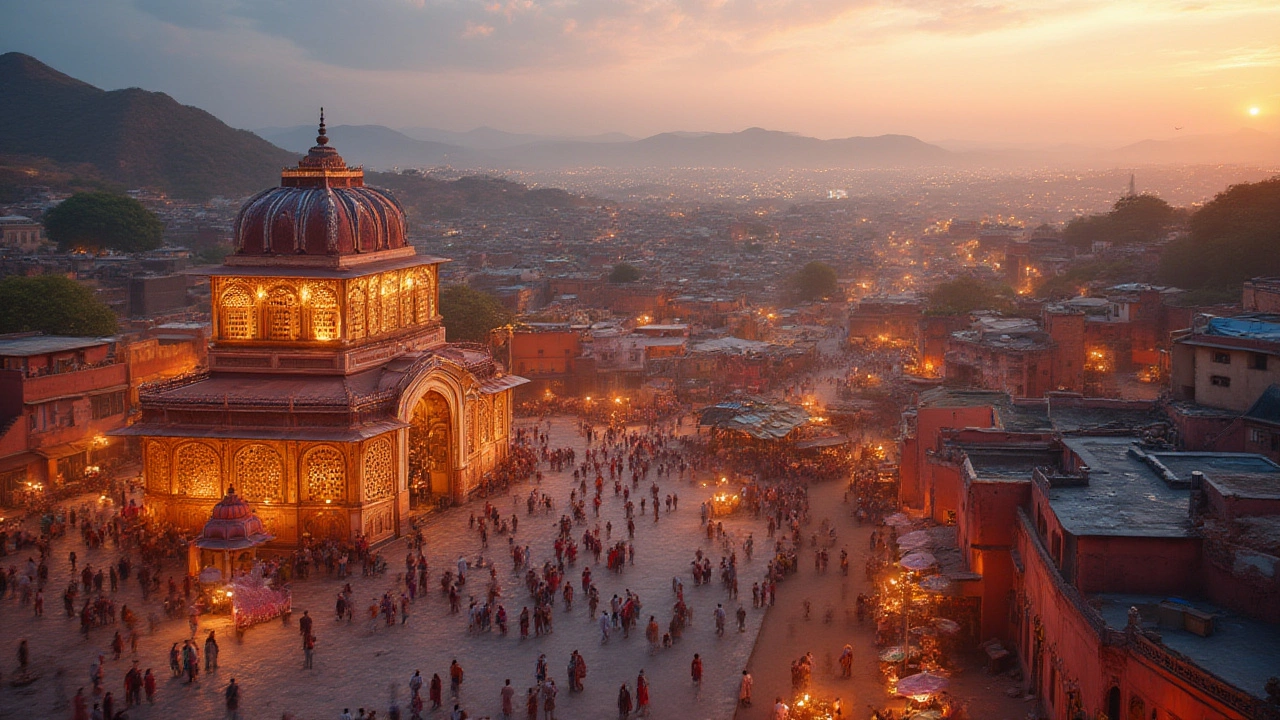Architecture in India: Heritage, Styles, and What You Need to Know
When you think of architecture in India, the layered, centuries-old building traditions that blend spirituality, climate, and empire. Also known as Indian built heritage, it’s not just about buildings—it’s about stories carved in stone, wood, and marble. From the white marble domes of the Taj Mahal to the stepped water tanks of Rajasthan, every structure tells a tale of rulers, faith, and survival. This isn’t random design—it’s a living record of how people lived, worshipped, and defended themselves across thousands of years.
Temple architecture, a distinct system of sacred design rooted in Vedic principles. Also known as Hindu temple style, it’s found from the towering gopurams of Tamil Nadu to the intricate carvings of Khajuraho. These aren’t just places of prayer—they’re cosmic maps, with every pillar, ceiling, and doorway aligned to sacred geometry. Then there’s Mughal architecture, the fusion of Persian, Islamic, and Indian styles that gave us palaces with symmetrical gardens and domes that seem to float. Also known as Indo-Islamic architecture, it turned conquest into art. The Red Fort, Fatehpur Sikri, and Humayun’s Tomb aren’t just tourist stops—they’re engineering marvels built without modern tools.
And you can’t talk about architecture in India without mentioning UNESCO World Heritage Sites, the official list of places recognized for their cultural or natural importance. Also known as India’s protected heritage, over 40 of them are architectural masterpieces—from the stepwells of Gujarat to the rock-cut caves of Ajanta. These sites aren’t frozen in time. They’re still used, still visited, still shaping how travelers experience India. Whether you’re walking through the narrow alleys of Jaipur’s palaces or standing under the vaulted ceilings of a colonial railway station in Mumbai, you’re walking through history built by hands you’ll never meet.
What ties all this together? Climate, culture, and craft. In hot, dry regions, thick walls and courtyards keep homes cool. In rainy coastal zones, sloped roofs and raised foundations prevent flooding. In sacred spaces, every detail follows ancient texts. And in cities that grew under empires, buildings became symbols of power—meant to awe, not just shelter.
You’ll find all this reflected in the posts below. Whether you’re planning a temple tour, wondering why Nagpur is called the Heart of India, or trying to understand what makes the Taj Mahal more than just a pretty building, the articles here give you real, practical context. No fluff. Just what you need to see, understand, and respect the architecture in India—not as a postcard, but as a living, breathing part of the journey.
